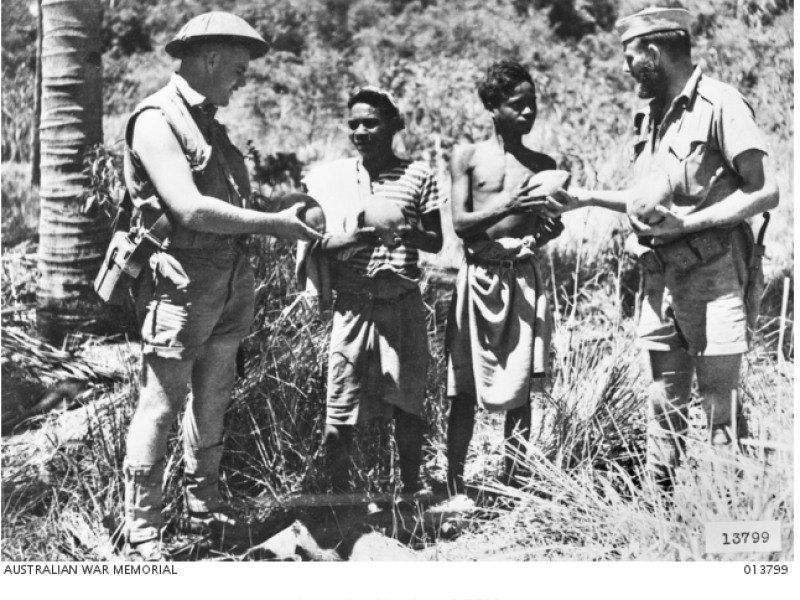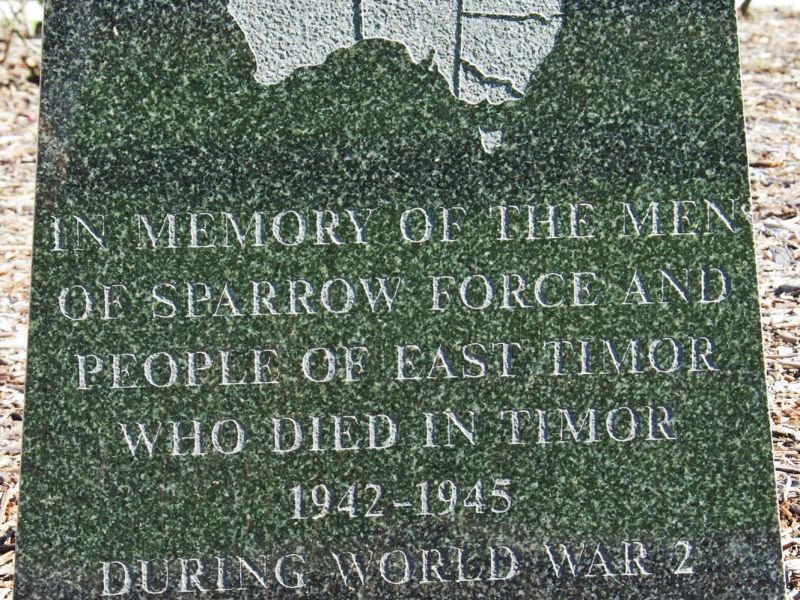"H" detachment Sparrow Force at Viqueque, 1942
Within days of the outbreak of the Pacific war in December 1941, the largely Australian “Sparrow Force” was sent to Timor. At that time Timor was divided roughly in half: the western half was part of the Netherlands East Indies, the eastern half a colony of neutral Portugal.
Sparrow Force initially comprised the 2/40th Battalion group around Koepang in western Timor and the 2nd (later 2/2nd) Independent Company in Portuguese Timor. The former were forced to surrender on 23 February after a gallant and aggressive defence against overwhelming odds.
Many who survived the battle died in cruel captivity. The latter fought a series of rear-guard actions as they retreated, in scattered small groups, into the mountains to pursue a guerrilla war.
In April, the Australians created a wireless transmitter (christened “Winnie the war winner”) and restored communications with the Allies. Soon they were receiving support not only from the local population but from the sea.
As a precaution against Japanese retaliation for their guerrilla activities, Sparrow Force created a small reconnaissance unit, codenamed “H”, to operate in the eastern end of the island. This detachment of 10 men was initially commanded by Lieutenant Gerry McKenzie, with Lieutenant Col Doig as his second-in-command. During the August fighting McKenzie was reassigned, leaving Doig to lead H force to Viqueque.
From Viqueque, members of H force explored the villages, roads and paths of the eastern provinces. They also gathered foodstuffs (paid for with promissory notes) to supplement the dwindling supplies held by Sparrow Force.
An urgent call from Darwin led to them recruiting 1,000 locals to gather sisal to make rope, and shortly afterwards 100 ponyloads of rope were despatched to headquarters, and thence to Australia.
One of H force’s most famous exploits was the rescue of a downed and badly burned RAAF pilot, Flying Officer S. G. Wadey, who had parachuted from his damaged Hudson bomber into an area between the Australians and Japanese. The Timorese had taken him to a town east of Dili.
In order to collect Wadey, Doig and a couple of his team undertook an epic journey, along near impassible tracks, battling uncooperative Portuguese administrators and disaffected Dutch troops. They survived an equally hazardous return trip, during which they had to negotiate a river crossing after a vital bridge north of Viqueque was blown up by the Dutch. Wadey survived and was later evacuated to Australia.
H force did not stay in Viqueque long; by September they were ranging around the eastern provinces, monitoring enemy activity. The Japanese were trying to turn the local population against them, and a combination of bribery and extremely harsh reprisals was beginning to take effect.
The 2/2nd was reinforced in September and continued to fight until they were withdrawn at the end of the year.
Brad Manera, Australian War Memorial
Image: Australian guerrillas accepting fresh fruit from Timorese in November 1942

 Australian War Memorial
Australian War Memorial